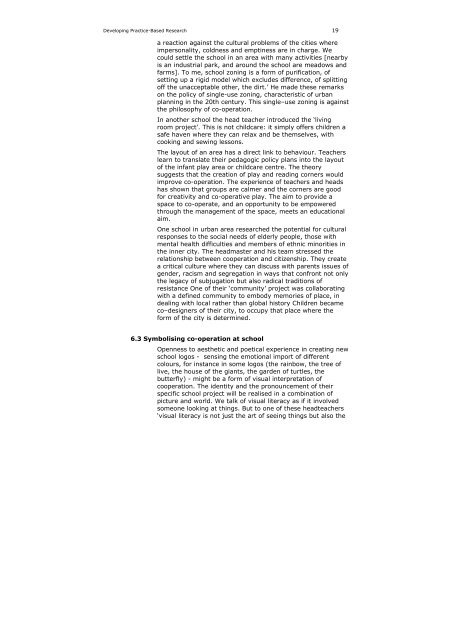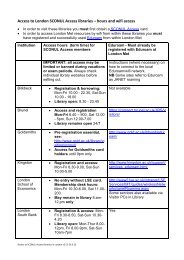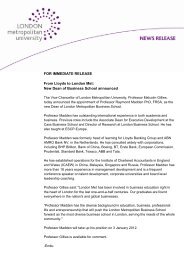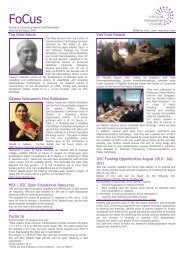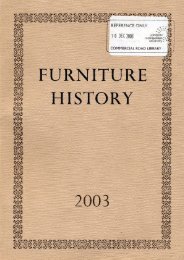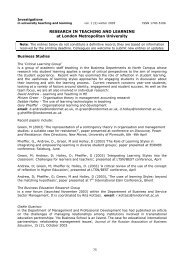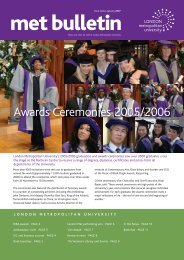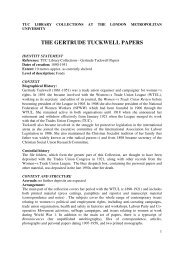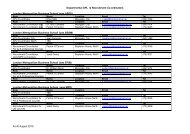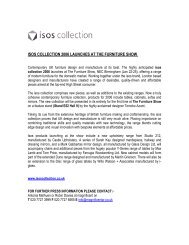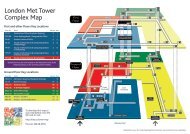Researching citizenship: - London Metropolitan University
Researching citizenship: - London Metropolitan University
Researching citizenship: - London Metropolitan University
Create successful ePaper yourself
Turn your PDF publications into a flip-book with our unique Google optimized e-Paper software.
Developing Practice-Based Research 19<br />
a reaction against the cultural problems of the cities where<br />
impersonality, coldness and emptiness are in charge. We<br />
could settle the school in an area with many activities [nearby<br />
is an industrial park, and around the school are meadows and<br />
farms]. To me, school zoning is a form of purification, of<br />
setting up a rigid model which excludes difference, of splitting<br />
off the unacceptable other, the dirt.’ He made these remarks<br />
on the policy of single-use zoning, characteristic of urban<br />
planning in the 20th century. This single–use zoning is against<br />
the philosophy of co-operation.<br />
In another school the head teacher introduced the ‘living<br />
room project’. This is not childcare: it simply offers children a<br />
safe haven where they can relax and be themselves, with<br />
cooking and sewing lessons.<br />
The layout of an area has a direct link to behaviour. Teachers<br />
learn to translate their pedagogic policy plans into the layout<br />
of the infant play area or childcare centre. The theory<br />
suggests that the creation of play and reading corners would<br />
improve co-operation. The experience of teachers and heads<br />
has shown that groups are calmer and the corners are good<br />
for creativity and co-operative play. The aim to provide a<br />
space to co-operate, and an opportunity to be empowered<br />
through the management of the space, meets an educational<br />
aim.<br />
One school in urban area researched the potential for cultural<br />
responses to the social needs of elderly people, those with<br />
mental health difficulties and members of ethnic minorities in<br />
the inner city. The headmaster and his team stressed the<br />
relationship between cooperation and <strong>citizenship</strong>. They create<br />
a critical culture where they can discuss with parents issues of<br />
gender, racism and segregation in ways that confront not only<br />
the legacy of subjugation but also radical traditions of<br />
resistance One of their ‘community’ project was collaborating<br />
with a defined community to embody memories of place, in<br />
dealing with local rather than global history Children became<br />
co–designers of their city, to occupy that place where the<br />
form of the city is determined.<br />
6.3 Symbolising co-operation at school<br />
Openness to aesthetic and poetical experience in creating new<br />
school logos - sensing the emotional import of different<br />
colours, for instance in some logos (the rainbow, the tree of<br />
live, the house of the giants, the garden of turtles, the<br />
butterfly) - might be a form of visual interpretation of<br />
cooperation. The identity and the pronouncement of their<br />
specific school project will be realised in a combination of<br />
picture and world. We talk of visual literacy as if it involved<br />
someone looking at things. But to one of these headteachers<br />
‘visual literacy is not just the art of seeing things but also the


